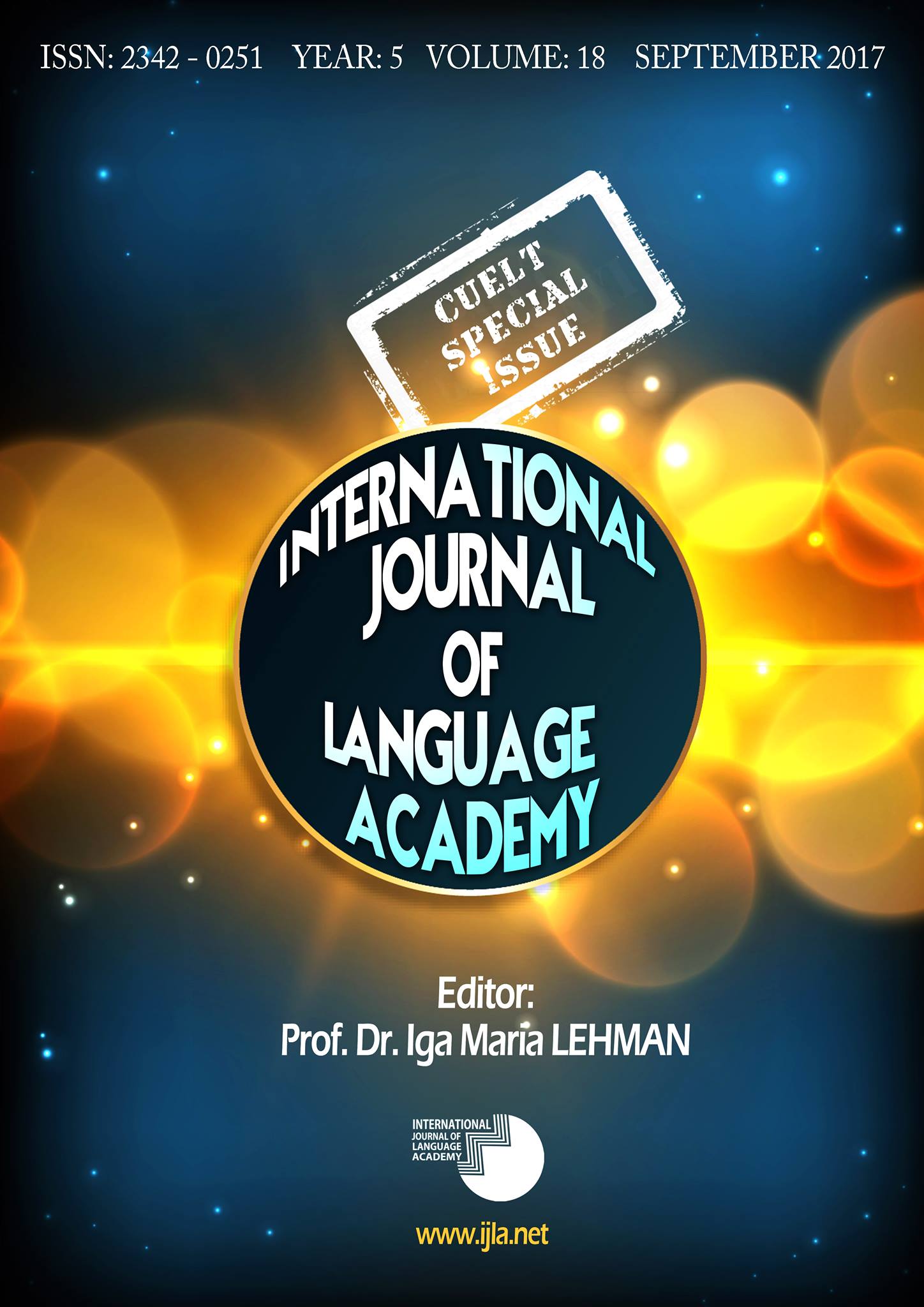Author :
Abstract
Bu çalışma Türkçeyi birinci dil olarak edinen çocukların filleri ve bu fiillerin üye yapısını öğrenme sürecinde dil girdisini nasıl analiz ettiklerini sorgulamayı amaçlamıştır. Bu amaçla, 24 cümle içeren bir çalışma yaşları 3,4 ile 5,0 arası değişen 12 Türk çocuğa uygulanmıştır. Bu 24 cümleden 12 tanesi biçimbirimsel olarak geçişli iken, 12 tanesi sözcüksel olarak geçişlidir. Ayrıca, 12 cümlede fiillerin nesneleri farklı cümle düzenlerinde belirtme durumu eki ile sunulmuştur. Bazı cümlelerde ise cümlelerin sözcük dizimi kasten değiştirilmiştir. Bu uygulamanın amacı, Türk çocukların filleri ve onları üye yapısını edinme sürecinde ettirgenlik yapısına, belirtme durum ekine ve sözcük dizimine olan hassasiyetlerini ortaya çıkarmaktır. Sonuçlar göstermiştir ki, Türkçeyi birinci dil olarak edinen çocuklar fiilleri ve onları üye yapısını öğrenirken dile özgü ipuçlarından yararlanmaktadırlar ki bu ipucu Türkçe için ettirgenlik ekidir. Ayrıca, Türk çocuklar sözcük yapısıyla oynanmış fiillerin üye yapılarını yorumlamak için anlamsal mekanizmaları kullanmış oldukları gözlemlenmektedir. Bütün bu sonuçlar Tomasello’nun (1992) görüşlerini destekler niteliktedir çünkü çocukların fiilleri ve onların üye yapılarını doğuştan gelen bir yeteneğin varlığı ile değil, dil girdileriyle etkileşime girerek edindikleri gözlemlenmiştir.
Keywords
Abstract
This study aims to investigate how Turkish children analyze language input in the process of acquisition of verbs and argument structures in their first language. To this end, a task including 24 sentences was presented to 12 Turkish children whose ages range between 3,4 to 5,0. Out of these 24 sentences, 12 sentences included morphologically transitive verbs whereas the other 12 ones included lexically transitive verbs. Further, in the 12 sentences, objects of the verbs were presented with accusative case marker in different word orders. Moreover, the word order was intentionally modified in some sentences. The aim of the task was to elicit the sensitivity of Turkish children to causative morphology, accusative case marker, and word order in the acquisition of verbs and argument structures of Turkish. The results indicate that Turkish children use language-specific cues in the interpretation of verbs and their argument structures, which is causative morphology for Turkish. In addition, Turkish children appear to use semantic mechanism in order to interpret the argument structures of verbs in sentences with modified word order. All of these results support the view of Tomasello (1992) as children seem to acquire verbs and argument structures without the presence of innate ability, but through the interaction with input.





